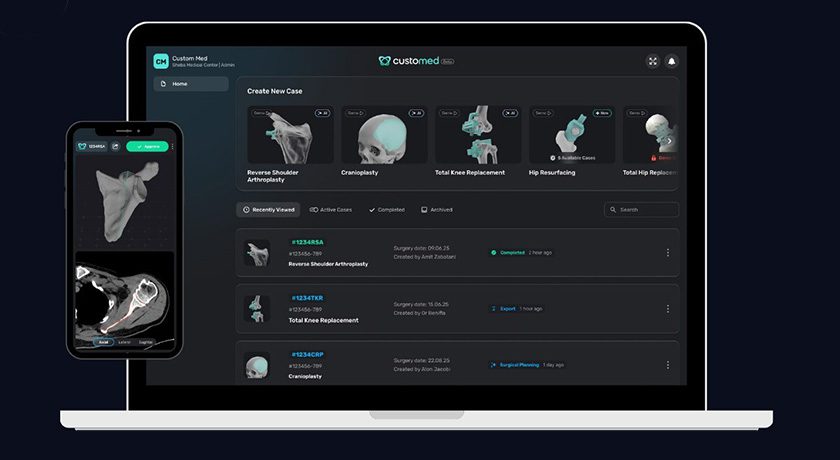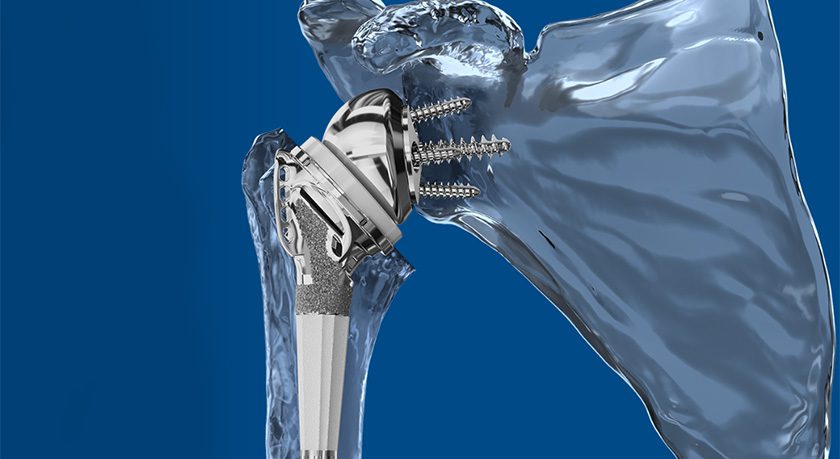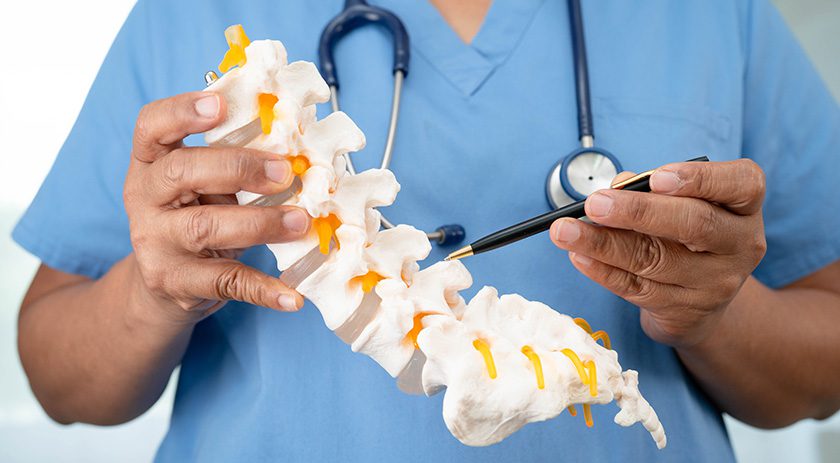

 Copy to clipboard
Copy to clipboard 
Growth opportunities outside of the United States provide a key boost to many of the industry’s largest companies. Below we take a look at the opportunities and issues facing three of those regions: Europe, China and Latin America.
Europe a Growth Engine for Largest Orthopedic Companies
Several of the largest orthopedic companies cited Europe as a catalyst for growth during 2024 and expect the region to be a key catalyst for the future.
As procedure volumes normalized across most geographies, backlogs and elevated demand persisted in some parts of Europe.
“So the volumes outside the U.S. remain very strong, in particular in Europe, and within Europe, in the U.K., where we know there is a prominent backlog,” said Zimmer Biomet CEO Ivan Tornos. “So, market dynamics are very healthy. One of the biggest drivers of growth outside of the U.S. is robotics.”
That emergence of robotic demand outside the U.S. certainly helped J&J MedTech become more competitive in knee replacement. The VELYS robotic system has racked up 110,000 procedures across 30 markets.
J&J MedTech OUS Knee Replacement Sales
Its introduction into Europe in late 2023 helped drive J&J MedTech’s international knee replacement sales above its pre-pandemic levels for the first time.
How long might the upside last? European markets seemed to remain elevated as of the first quarter of 2025.
“Practically speaking, [international] markets are probably a little stronger than they might be over time,” said Enovis CEO Matt Trerotola. “As the markets continue to normalize, we are going to be driving more cross-selling and expand our delta to the markets. We certainly believe that international can play the role they need to play in our overall Recon strategic growth.”
Fundamental Volume Shift in China
Most major orthopedic segments have been through the volume-based procurement process in China, with the most recent tenders hitting sports medicine.
Beyond the price cuts, however, companies from outside of China have been hard pressed to secure incremental volume, which has overwhelmingly gone to domestic Chinese companies.
As a reminder, there is tendered and off-tender volume in China. Both operate from the same price point, but the tendered business has committed volumes while off-tender has “free floating” volume. Companies like Smith+Nephew have eaten the price drops but additional off-tender volume has generally not materialized.
“China orthopedics today, at VBP price levels, is not a profitable business for us,” said Smith+Nephew CEO Deepak Nath. “Why are we in it? First it’s giving ourselves the opportunity to see how the market evolves and in particular, how robotics gets adopted in that market. In order for us to do that, we need to maintain a certain level of presence and actually have directed some efforts in developing the robotics market. China could get back to not what it was in terms of attractiveness from a profitability standpoint, but to a better place than it is today.”
Smith+Nephew, and companies in the same situation, have a few years before the next joint replacement tender to determine the impact of robotics on the Chinese market. As recently as the third quarter of 2024, Smith+Nephew said the update of robotics in China has been muted. It also seems reasonable to assume that domestic Chinese companies will have the inside track on robotic uptake in the country.
However, according to Johnson & Johnson MedTech, 60% of the world’s patients live in the Asia Pacific region. Companies will likely remain highly adaptable to market conditions in China to remain there.
Taking Share Key to Growth in Latin America
Like Europe and the Asia Pacific region, it is hard to generalize about the orthopedic markets in countries that make up Latin America. But we recently spoke with Rodrigo Fernandez, Latin America General Manager for Citieffe, an orthopedic trauma company based in Italy.
Mr. Fernandez said there isn’t much organic growth in the region, more competitors from Asia are coming into the markets and regulatory agencies are taking more time to approve new technologies.
There is relatively little investment in healthcare compared to a country like the United States, and public healthcare makes up the vast majority of care in Mexico. About 10% of people have private insurance in Mexico.
This creates a very fragmented landscape, with each country having different regulations, expectations and opportunities. Companies must remain adaptable.
“Even if the market is not growing a lot, we have been very successful in gaining market share,” said Mr. Fernandez. “That’s a result of what we have been doing with the doctors, bringing products and services at the end of the day. We have different portfolios in different markets. We need to find ways to give these people access to our products.”
Despite disruption from tariffs and MDR, we expect orthopedic companies to remain focused on international markets. As enabling technology penetrates more regions, we could see more global consolidation, similar to Enovis’ acquisitions of Mathys and Lima.
Growth opportunities outside of the United States provide a key boost to many of the industry’s largest companies. Below we take a look at the opportunities and issues facing three of those regions: Europe, China and Latin America.
Europe a Growth Engine for Largest Orthopedic Companies
Several of the largest orthopedic companies...
Growth opportunities outside of the United States provide a key boost to many of the industry’s largest companies. Below we take a look at the opportunities and issues facing three of those regions: Europe, China and Latin America.
Europe a Growth Engine for Largest Orthopedic Companies
Several of the largest orthopedic companies cited Europe as a catalyst for growth during 2024 and expect the region to be a key catalyst for the future.
As procedure volumes normalized across most geographies, backlogs and elevated demand persisted in some parts of Europe.
“So the volumes outside the U.S. remain very strong, in particular in Europe, and within Europe, in the U.K., where we know there is a prominent backlog,” said Zimmer Biomet CEO Ivan Tornos. “So, market dynamics are very healthy. One of the biggest drivers of growth outside of the U.S. is robotics.”
That emergence of robotic demand outside the U.S. certainly helped J&J MedTech become more competitive in knee replacement. The VELYS robotic system has racked up 110,000 procedures across 30 markets.
J&J MedTech OUS Knee Replacement Sales
Its introduction into Europe in late 2023 helped drive J&J MedTech’s international knee replacement sales above its pre-pandemic levels for the first time.
How long might the upside last? European markets seemed to remain elevated as of the first quarter of 2025.
“Practically speaking, [international] markets are probably a little stronger than they might be over time,” said Enovis CEO Matt Trerotola. “As the markets continue to normalize, we are going to be driving more cross-selling and expand our delta to the markets. We certainly believe that international can play the role they need to play in our overall Recon strategic growth.”
Fundamental Volume Shift in China
Most major orthopedic segments have been through the volume-based procurement process in China, with the most recent tenders hitting sports medicine.
Beyond the price cuts, however, companies from outside of China have been hard pressed to secure incremental volume, which has overwhelmingly gone to domestic Chinese companies.
As a reminder, there is tendered and off-tender volume in China. Both operate from the same price point, but the tendered business has committed volumes while off-tender has “free floating” volume. Companies like Smith+Nephew have eaten the price drops but additional off-tender volume has generally not materialized.
“China orthopedics today, at VBP price levels, is not a profitable business for us,” said Smith+Nephew CEO Deepak Nath. “Why are we in it? First it’s giving ourselves the opportunity to see how the market evolves and in particular, how robotics gets adopted in that market. In order for us to do that, we need to maintain a certain level of presence and actually have directed some efforts in developing the robotics market. China could get back to not what it was in terms of attractiveness from a profitability standpoint, but to a better place than it is today.”
Smith+Nephew, and companies in the same situation, have a few years before the next joint replacement tender to determine the impact of robotics on the Chinese market. As recently as the third quarter of 2024, Smith+Nephew said the update of robotics in China has been muted. It also seems reasonable to assume that domestic Chinese companies will have the inside track on robotic uptake in the country.
However, according to Johnson & Johnson MedTech, 60% of the world’s patients live in the Asia Pacific region. Companies will likely remain highly adaptable to market conditions in China to remain there.
Taking Share Key to Growth in Latin America
Like Europe and the Asia Pacific region, it is hard to generalize about the orthopedic markets in countries that make up Latin America. But we recently spoke with Rodrigo Fernandez, Latin America General Manager for Citieffe, an orthopedic trauma company based in Italy.
Mr. Fernandez said there isn’t much organic growth in the region, more competitors from Asia are coming into the markets and regulatory agencies are taking more time to approve new technologies.
There is relatively little investment in healthcare compared to a country like the United States, and public healthcare makes up the vast majority of care in Mexico. About 10% of people have private insurance in Mexico.
This creates a very fragmented landscape, with each country having different regulations, expectations and opportunities. Companies must remain adaptable.
“Even if the market is not growing a lot, we have been very successful in gaining market share,” said Mr. Fernandez. “That’s a result of what we have been doing with the doctors, bringing products and services at the end of the day. We have different portfolios in different markets. We need to find ways to give these people access to our products.”
Despite disruption from tariffs and MDR, we expect orthopedic companies to remain focused on international markets. As enabling technology penetrates more regions, we could see more global consolidation, similar to Enovis’ acquisitions of Mathys and Lima.

You’ve reached your limit.
We’re glad you’re finding value in our content — and we’d love for you to keep going.
Subscribe now for unlimited access to orthopedic business intelligence.
ME
Mike Evers is a Senior Market Analyst and writer with over 15 years of experience in the medical industry, spanning cardiac rhythm management, ER coding and billing, and orthopedics. He joined ORTHOWORLD in 2018, where he provides market analysis and editorial coverage.







